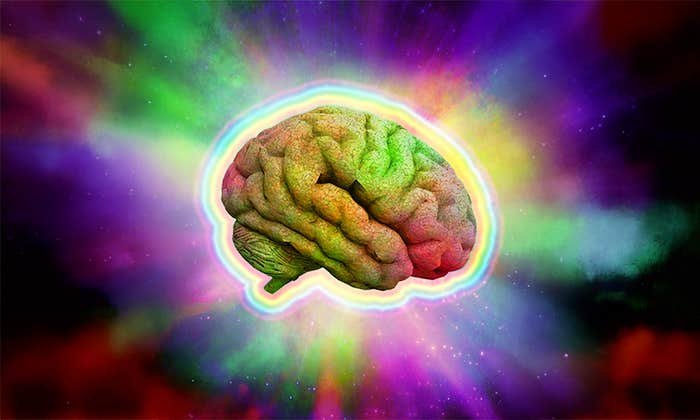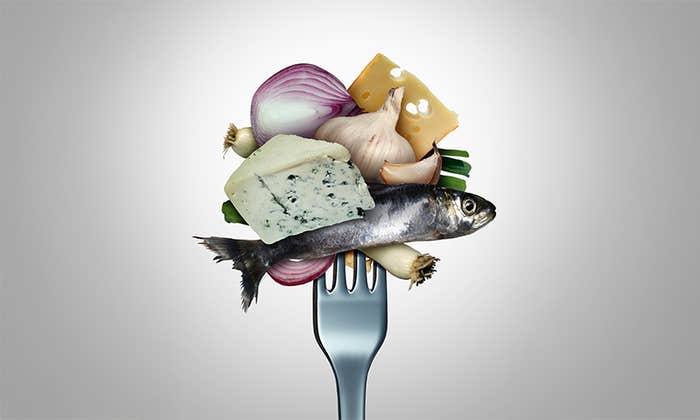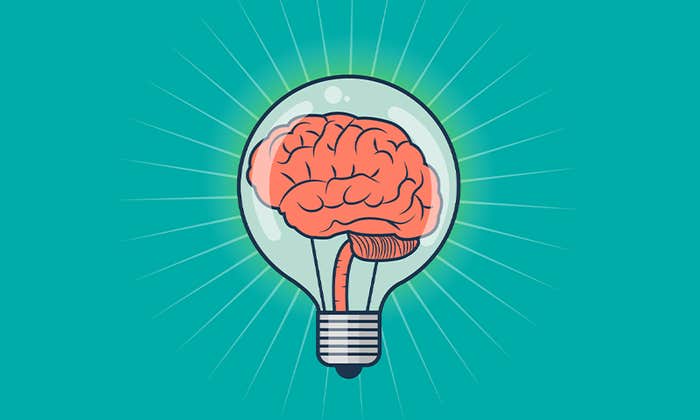In his most recent book, Intuition Pumps and Other Tools for Thinking, the philosopher Daniel Dennett has revisited his 1991 observation that consciousness arises out of a selection process in the brain akin to what makes someone or something famous. Consciousness, he writes, can be seen as “fame in the brain, cerebral celebrity, a way in which some contents come to be more influential and memorable than the competition.”
Though initially controversial, Dennett’s idea of “fame in the brain” is a logical and inevitable outgrowth of the dramatic shift in how we presently think about thinking. A hundred years ago, Sigmund Freud and James Joyce were considered groundbreakers for their emphasis on the role of the unconscious in thought and action. Now we are regularly bombarded with new insights into how the unconscious guides our behavior. At the same time, neuroscience has largely debunked the idea of an autonomous self that has the final say in decisions; few science-savvy folks still believe there is a “ghost in the machine,” a little homunculus in the brain who is watching our perceptions or thinking our thoughts. Some philosophers even question whether the conscious mind plays any role in our thoughts. In short, present-day neuroscience has pulled the rug out from under the concept of “the rational man.”
Nevertheless, most if not all of us persist with the visceral sense that our thoughts arise out of reason and rational deliberation. Dennett’s “fame in the brain” metaphor is a wonderful antidote to this wishful thinking. It captures the neurophysiological reality that thoughts emerge from the unpredictable interaction of mindless neurons and synapses in what might be best described as a winner-take-all popularity contest.
Thoughts emerge from the interaction of mindless neurons and synapses in what might be best described as a popularity contest.
To put this contest into practical terms, imagine being a child. Your mother offers you the choice between a baseball and a violin, neither of which you’ve seen before. You pick them both up, bang them, sniff them, run your fingers along the baseball seams and feel the patina of the violin. As you do, all of the biological and experiential factors that make each of us unique begin to fight for pre-eminence. Your genetic predispositions toward musicality, athleticism, perfect pitch, and fine- versus gross-motor coordination jockey for position. The innate “I like the feel of leather” tries to overpower the nearly equally insistent appreciation of the curved shape of the violin. Snippets of tunes you’ve heard your parents play, ditties from Sesame Street, and the sound of a home run that you’ve heard on the TV vie for your attention. The list of competing influences is endless and impossible to accurately identify. Eventually, for no obvious reason, you choose the violin. Through practice and study, you gradually build up “violin” neural circuits. Meanwhile, the loser—the nascent baseball circuit—fails to develop and withers away from disuse. (The infant brain has twice the neurons of the adult brain; unused neurons are pruned away. These lost connections represent the paths not taken.)
If you are asked why you chose the violin, your answer is unlikely to be an accurate reflection of the unconscious competition that led to your choice. In effect, the decision happened to you. Your brain developed a “violin neural circuit” in the same way that fame makes some actors, musicians, and novelists superstars while others, for reasons that are never entirely clear, are relegated to obscurity.
The consequences of not knowing why you chose a violin over a baseball may not be far-reaching, but what about life-and-death decisions? As a clinical neurologist, I’ve frequently been called on for expert testimony in medically complex court cases. The legal process has always seemed iffy at best; the reasoning behind a final verdict is often as obscure and arbitrary as why you might have chosen the baseball but ended up picking the violin. Asking a juror to be “objective,” recognize and control innate biases and understand his or her lines of reasoning, flies in the face of the evolving science of decision-making. The harsh and scary reality is the scales of justice aren’t tipped in the open courtroom; the real action occurs out of sight.
The internal machinations of a juror reflect how fame is generated in the brain. Let’s take a look. Perhaps the most socially significant task that each of us, as citizens, might be asked to perform is to decide the fate of another. Imagine that you are a juror assigned to the sentencing phase of a person convicted of first-degree murder. The defendant is a 33-year-old woman who has confessed to shooting her boyfriend in the head, then stabbing him nearly 30 times before unsuccessfully trying to decapitate him with a butcher knife. Initially she tells police she hadn’t been present, that her boyfriend had been killed by “unknown intruders.” When she can offer no evidence to substantiate her alibi, she then confesses, arguing self-defense and that her boyfriend had submitted her to prior physical and mental abuse. On a national TV news show, she predicts that no jury will find her guilty, yet after a several-month trial, you find her guilty of first-degree murder. It is now sentencing time. Your assignment is to determine whether the crime warrants the death penalty or a life sentence without parole, or a lesser sentence with the possibility of parole.
Your first flurry of ideas and feelings will seem to bubble up unbidden: the nature of justice, the value of rehabilitation, the likelihood that “once violent, always violent,” the societal value of harsh punishment acting as a general deterrent, even the nature of fairness. Your mind flits from this to that, as though sorting through an internally generated cornucopia of voices from the past (from parents to Sunday school teachers), cultural and personal beliefs, prior experiences and a flood of ill-defined feelings. Your so-called deliberation is anything but deliberate. Neither are the considerations of your fellow jurors.
The harsh and scary reality is the scales of justice aren’t tipped in the open courtroom; the real action occurs out of sight.
A bottom-up look at neurons and their interconnections offers a good starting point for inferring how and why each of us is likely to draw different conclusions from the same information. The prevailing and most reasonable operating assumption is that the brain is a computational device—an extraordinarily complex calculator that adds up all the pluses and minuses at every level of function. Neurons fire or don’t fire. Neural connections can be augmented (enhanced) or diminished (pruned). Genes can be up and down regulated, turned on or off. Neurotransmitters can be either excitatory or inhibitory. Receptors at synapses can be increased, decreased, excited, or inhibited. Add up all these pluses and minuses at every instant and you have our thoughts and actions.
To get a sense of how this computation takes place, let me offer an analogy from the world of artificial intelligence (AI). Using the biological neuron and its connections as the model, computational neuroscientists have been able to build artificial neural networks that can play chess, poker, and Jeopardy, read faces, recognize speech, and recommend books at Amazon.com. Rather than being a hard-wired, line-by-line traditional computer program, a neural network learns by making an initial prediction and then comparing this prediction with a desired result. The degree of accuracy of the prediction is then fed back into the neural network, where it updates the network. With each repetition of this feedback-based decision refinement, the connections between the components of the network are rebalanced (reweighted). With further repetitions, some connections become stronger while others are weakened. The prevailing decision builds on itself until it becomes the computational equivalent of a bias. The benefit is a greater consistency of prediction (the basis of learning); the downside is decreased flexibility and ability to change in the face of new evidence. Change will have to overcome already heavily “weighted” circuitry. If an Amazon neural network correctly predicts that you will only buy crime novels, it will eventually stop suggesting other genres. If you always adopt a certain line of reasoning or fall back on the same supporting evidence, it will become increasingly difficult to entertain alternative possibilities. What begins as a fierce competition between possibilities ends up as hard-to-break habits.
This conceptual interface between incoming information and the final output—the “hidden layer” in AI jargon—isn’t a discrete brain structure. It conceptually resides within the connections between all neurons involved in any particular neural network. It is the interface between incoming sensory data and a final perception, thought, or action. A network can be relatively localized (as in a specialized visual module confined to a small area of occipital cortex), or can be widely distributed throughout the brain. With a sufficiently sensitive fMRI scan, we would see all these areas lighting up when Proust contemplated the madeleine.
It is in the hidden layer that all elements of biology (from genetic predispositions to momentary neurotransmitter fluctuations) and all past experience, whether remembered or long forgotten, compete to be heard. Each factor does its best to affect the weighting of a neural circuit. Using the fame analogy, it is where the votes are cast and tabulated and a winner is chosen. It is why your red is not necessarily my red, your idea of beauty isn’t mine, why eyewitnesses offer differing accounts of an accident, or why we don’t all put our money on the same roulette number.
Although we cannot directly visualize the hidden layer, the fMRI offers a low-resolution image of the “weighting” of various brain regions. In one recent study, potential jurors were asked to decide whether or not “mitigating circumstances” would affect the degree of punishment they would mete out in real-life murder cases. Expressions of sympathy for the murderer activated regions associated with thinking about moral conflict, which include the dorsomedial prefrontal cortex and the temporoparietal junction, while one’s inclination to mitigate a sentence were reflected in increased middle insula activity—a brain region considered to be most responsive to visceral feelings, such as empathy and “feeling the pain of others.” The degree of insular activation strongly correlated with the degree of sentence reduction put forth by each subject. The degree of activation of a brain region is analogous to the weighting of one aspect of this metaphoric hidden layer.
Imagine that you are a juror assigned to the sentencing phase of a person convicted of first-degree murder.
Unfortunately, the seductive power of brain imaging (the fMRI in particular) has prompted a popular mythology that complex mental states originate in discrete areas of brain. It is true that some areas of the brain have relatively specific functions, such as the auditory and visual areas that process primary sensory inputs. A primitive emotion, fear, is well-correlated with amygdala activity. But the more complex the mental state, the less likely we are to find discrete modules. Most brain areas perform multiple and not necessarily related functions.
For example, in the juror study, activation of the right temporoparietal junction cannot be given a single interpretation. The right temporoparietal junction is associated with “theory of mind”—an understanding of what another is thinking and experiencing—and with the sense of where “I” am located—the physical sense of being located within your body. (Stimulation of the right temporoparietal junctions can elicit typical out-of-body experiences.) Activation of this region could be seen as both representing votes for one’s sense of self and for a sense of knowing what another might be thinking and feeling, as in the metaphor, “My heart goes out to her.”
In a recent study in Nature Neuroscience, U.C. Berkeley neuroscientist Jack Gallant and colleagues offer a compelling insight into how abstract categories are processed. Volunteers were shown a number of video clips and asked to specifically look for either humans or vehicles (cars and trucks). When looking for humans, certain widely distributed brain areas were activated on the fMRI; when looking for vehicles, a different, but also widely distributed pattern emerged. The response was graded—a statistical rather than absolute difference determined by the degree of attention the volunteers gave to a particular category. Neither the concept of vehicle or human was correlated with the activation of a localized area of brain. (You can say goodbye to the once-hyped idea of specific Jennifer Aniston neurons.) Going forward, the modular concept of specific brain regions for complex and abstract concepts is likely to be replaced by the idea of global brain interactions and interconnectedness (distributed representation).
Once we see abstract ideas and complex feelings—from a sense of agency to a sense of fairness—as emerging from large areas of interconnected brain, it is easier to see how our brains are composed of layer upon layer of silent jurors buffeted by the power struggle between personal genetics, prior experience, mood, personality, and even one’s moment-to-moment shifts in attention. With this ever-present competition in mind, we can now return to the jury box.
Remember, you are to decide whether or not the defendant will be put to death. In determining what is fair, you will be influenced by your own tendencies toward legalistic thinking and the belief in following the letter of the law, your feelings as to whether or not we “deserve” what we get in life, how you balance off “fate” from personal responsibility, nature from nurture, compassion from retribution. Your own sense of agency will inform your decision as to how responsible we are for our behavior, while your innate risk-tolerance might sway the degree to which you feel it’s safe to allow the defendant an opportunity for rehabilitation. What starts out as a question of “fairness” cannot be answered without addressing a number of interrelated issues, which in turn bring up other issues which feed back to each other like an enigmatic Escher drawing. As we redirect our attention from one concept to another, our global circuitry is constantly recalibrating.
A strong desire for traditional values, a relative lack of empathy, a low degree of optimism in the rehabilitation of criminals, a strong sense of religiosity and adherence to its teachings (as in “an eye for an eye”) might collectively make one favor a death sentence. At least this is how we presently tend to use folk psychology to explain verdicts. But this correlation isn’t the same as prediction. Forgotten childhood slights, a recently seen horror movie, a chance overhead conversation, a change in the weather—circumstances are always affecting how we cast our ballots.
Maybe the murderer reminds you of a high school classmate who was abused by a drunken father.
It is easy to imagine situations in which the same degree of expression of the same traits might result in voting against the death penalty. Perhaps your lack of empathy is greater for the victim than the murderer. Maybe the murderer reminds you of a high school classmate who was abused by a drunken father while the victim is subliminally reminiscent of a high school bully that you have long since forgotten. Though you know better, you might actually experience more empathy for the murderer than the victim. Or your lack of empathy creates a personal distaste for the victim’s family who are demanding the death penalty.
So what decision would you make in the above-mentioned sentencing trial? What decision do you think was reached? As you have probably guessed, my hypothetical murder case is actually the recent Jodi Arias trial, whose jurors were deadlocked on the death penalty, 8 to 4. Recent interviews with some of the jurors offered a look behind the curtains of their decisions. One pro-death penalty juror said Arias was lying and showed no remorse; this juror felt the jury had let down the victim’s family by not reaching a unanimous decision for the death penalty. Another juror justified the death sentence by “carefully weighing the aggravating and mitigating factors, the planning, the cover-up, the continual lying, and the mechanism of death.” The jury foreman, who voted against the death penalty, felt the defendant had been mentally and physically abused, and further that no one should be put to death “for being stupid.” He argued the jury system is flawed because it was ultimately unfair to ask jurors to determine what is fair. I agree.
Despite wishful thinking, and a conventional wisdom that states we are capable of conscious and complex decision-making, we are at the mercy of opaque internal forces. The judicial system must continue to wrestle with this basic tenet of modern neurophysiology: The most irrefutable evidence will not necessarily lead to a single line of reasoning in jurors and a uniform verdict. Progress will depend on realizing the underlying facts of our decisions are not in evidence.
Robert Burton, M.D., is the author of A Skeptic’s Guide to the Mind: What Neuroscience Can and Cannot Tell Us About Ourselves, and On Being Right: Believing You Are Right Even When You’re Not.


























